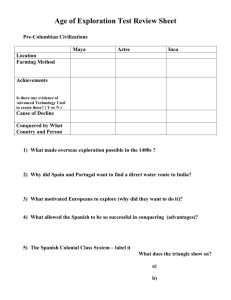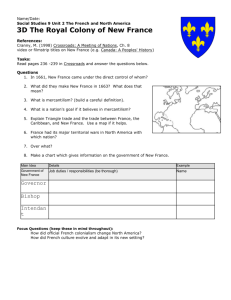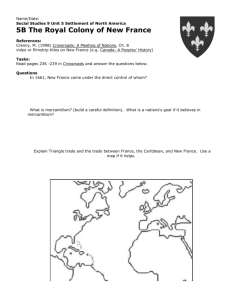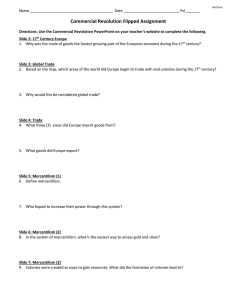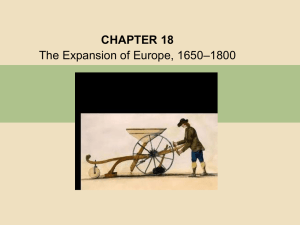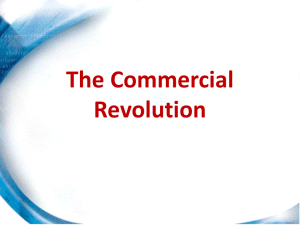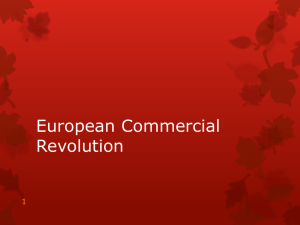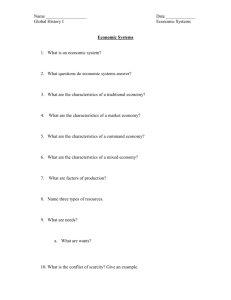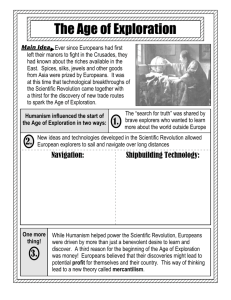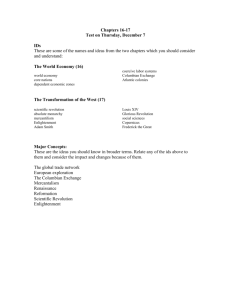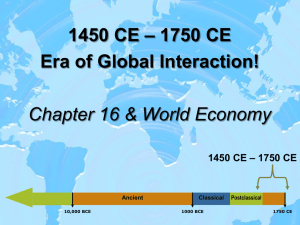Section 3.12
advertisement
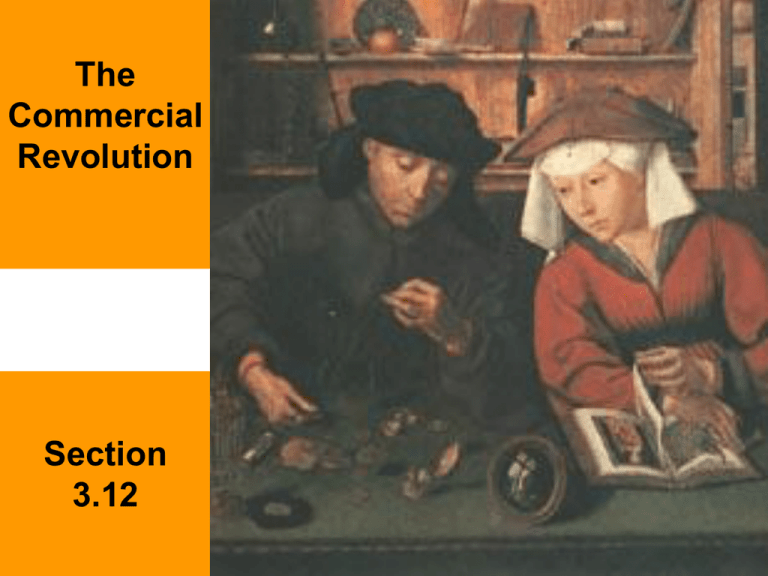
The Commercial Revolution Section 3.12 Questions to consider • What important economic changes in the early modern centuries does the term “Commercial Revolution” signify? • Describe the growth of European population in the sixteenth century and the nature of this growth. • Explain the origins, nature, and effects of the “putting out” system. Of what importance were the needs of the military in the rise of capitalism? What change in attitudes could be noted toward the lending of money at interest? • Explain the general nature and purpose of mercantilism, citing examples of mercantilist policies and regulations. What comparison may be made between mercantilism and New Monarchies? What were the results of the voyages of discovery? • Columbian Exchange • Population Rise (1600) – England=5 mil – France=20 mil – Russia= 10 mil • Price Revolution – Rise due to population growth – More gold/debasing = inflation – New land less fertile • New Economic Models (mercantilism) • Commercial Revolution – Economic changes in Europe marked by capitalism, transformation from town to nation-centered economy Changes in Commerce and Production • Medieval Economic Model – Comprised of town and surrounding farmland (manors) • Manors used as colony by towns – Towns controlled by Guild System • Craftsmen=provincial production – Produced only upon order – Little risk, little profit, little innovation – Instituted Protectionists policies and large barriers of entry into trades – Capital = his workbench, tools, workshop – Lack of ability to network in long distance trade, capital to tie up in stocks of unsold wares, knowledge of distant customer Changes in Commerce and Production con. • Commercial System – Merchants • Act as middlemen between manufacturers and consumers • Usurp guilds – Bankers • Jacob Fugger – Augsburg businessman – Got rich from fustian (cotton/wool mix) – Expanded into spice, silk, mining business – Financed Hapsburgs, Popes, and Portuguese trade/merchants Putting Out/Domestic System Cottage Industry • Checkmates guilds • Entrepreneurs “put out” manufacturing work to country people • He owns the capital, means of production • Out of guild’s reach Wool Industry Farmer sheers sheep Entrepreneur sells Finished product Wool taken to Spinner Thread taken to Weaver Dyed cloth Taken to Tailor Fabric taken to Dyer Capital and Labor • Cottage Industry – Separates owner from worker – Allows mass production • New Industries – Printing • Large overhead • Rising literacy creates demand for books – Shipbuilding, weapons • New Monarchs – Need uniforms, muskets, uniforms, food – Banking • Even Church begins to allow “reasonable return” • Usury allowed • Centered in Amsterdam Mercantilism • Economic theory in which a nation’s power depended on keeping and increasing its gold supplies by maintaining a favorable balance of trade • “Doctrine of Bullionism”- gold is wealth • Government should encourage manufacturing • Favorable balance of trade- export more than you import • Make country self-sufficient • Acquire colonies to supply raw materials to mother-country • Achieved through National Regulations!!! – The Navigation Acts Raw materials taken back to England Raw materials manufactured into finished products. Finished product traded for gold. How mercantilism works Slave labor used to acquire raw materials Slaves are transported to colonies England trades finished products for slaves How did the New Monarchs increase regulation within mercantilism? • Navigation Acts • Statue of Artificers (1563) – Regulates artisans entering guilds • English Poor Law (1601) – Puts indigents, poor to work – Government relief program • Encouraged espionage – Turkish dyers (1582) • Protective tariffs • Subsidizing desirable good manufacturers • Encouraged joint-stock companies – Granted monopolies
